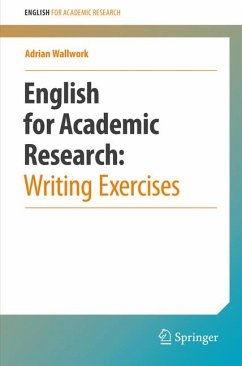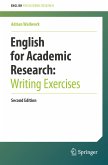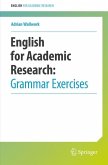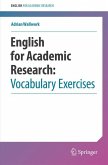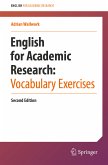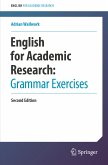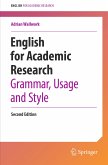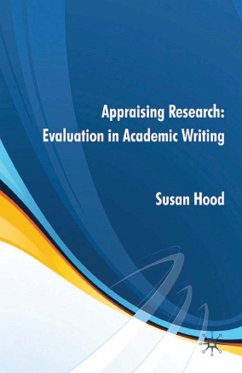This book is based on a study of referees' reports and letters from journal editors on reasons why papers written by non-native researchers are rejected due to problem with English (long sentences, redundancy, poor structure etc.). It draws on English-related errors from around 5000 papers written by non-native authors, around 3000 emails, 500 abstracts by PhD students, and over 1000 hours of teaching researchers how to write and present research papers.
Some exercises require no actual writing but simply choosing between various options, thus facilitating self-study, e-reading and rapid progress. In those exercises where extended writing is required, model answers are given. Exercise types are repeated for different contexts, for example the importance of being concise is tested for use in papers, referees' reports, and emails of various types. Such repetition of similar types of exercises is designed to facilitate revision.
The exercises can also be integrated into English for Academic Purposes (EAP) and English for Special Purposes (ESP) courses at universities and research institutes.
Other related books in this series:
· English for Academic Research: Grammar Exercises
· English for Academic Research: Grammar, Usage and Style
· English for Writing Research Papers
· English for Academic Research: Teacher's Guide
Adrian Wallwork has written over 30 books covering General English (Cambridge University Press, Scholastic), Business English (Oxford University Press), and Scientific English (Springer). He has trained several thousand PhD students from all over the world to write and present their research. Adrian also runs a scientific editing service: English for Academics (E4AC).
Some exercises require no actual writing but simply choosing between various options, thus facilitating self-study, e-reading and rapid progress. In those exercises where extended writing is required, model answers are given. Exercise types are repeated for different contexts, for example the importance of being concise is tested for use in papers, referees' reports, and emails of various types. Such repetition of similar types of exercises is designed to facilitate revision.
The exercises can also be integrated into English for Academic Purposes (EAP) and English for Special Purposes (ESP) courses at universities and research institutes.
Other related books in this series:
· English for Academic Research: Grammar Exercises
· English for Academic Research: Grammar, Usage and Style
· English for Writing Research Papers
· English for Academic Research: Teacher's Guide
Adrian Wallwork has written over 30 books covering General English (Cambridge University Press, Scholastic), Business English (Oxford University Press), and Scientific English (Springer). He has trained several thousand PhD students from all over the world to write and present their research. Adrian also runs a scientific editing service: English for Academics (E4AC).
Dieser Download kann aus rechtlichen Gründen nur mit Rechnungsadresse in A, B, BG, CY, CZ, D, DK, EW, E, FIN, F, GR, HR, H, IRL, I, LT, L, LR, M, NL, PL, P, R, S, SLO, SK ausgeliefert werden.

